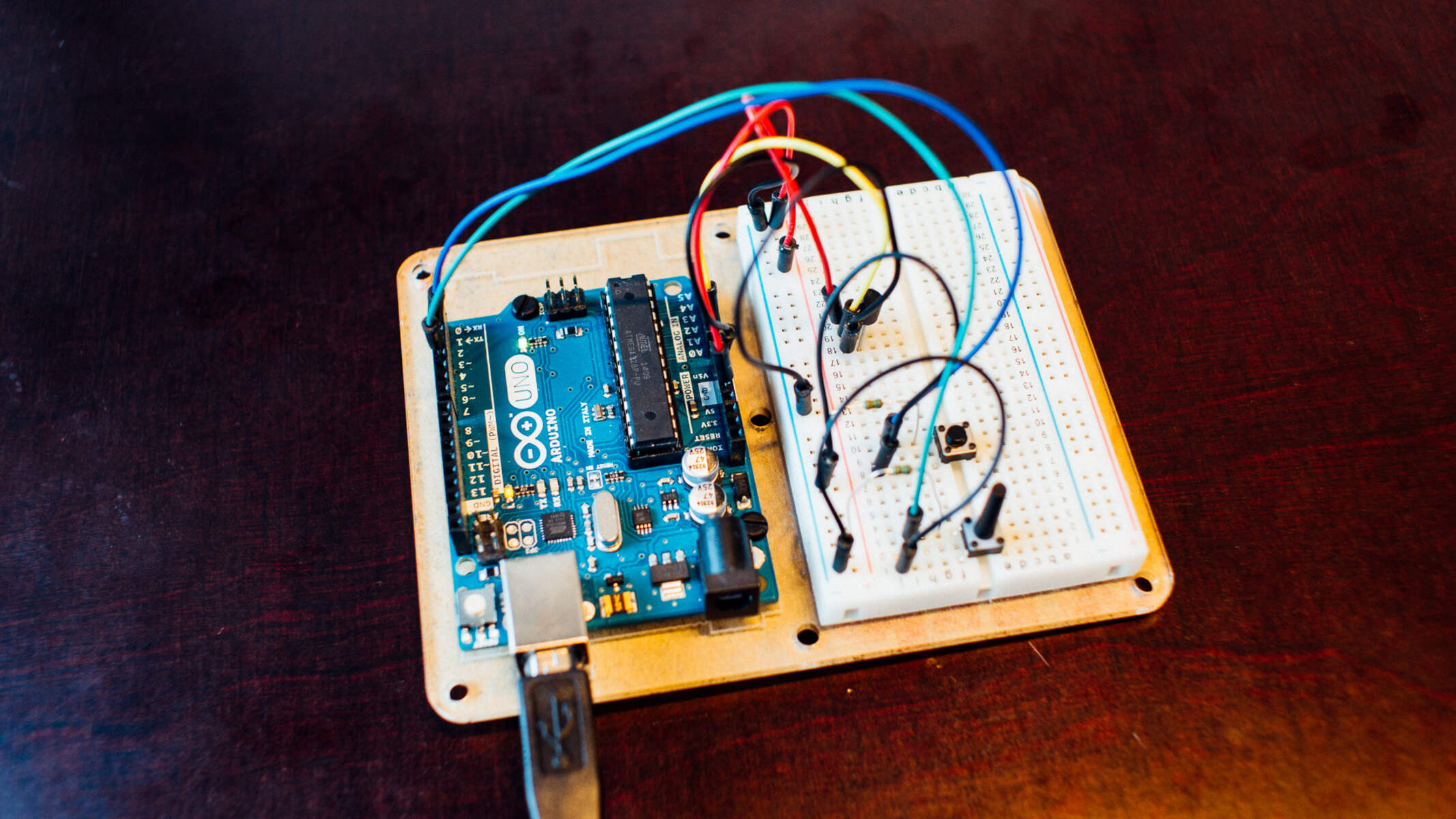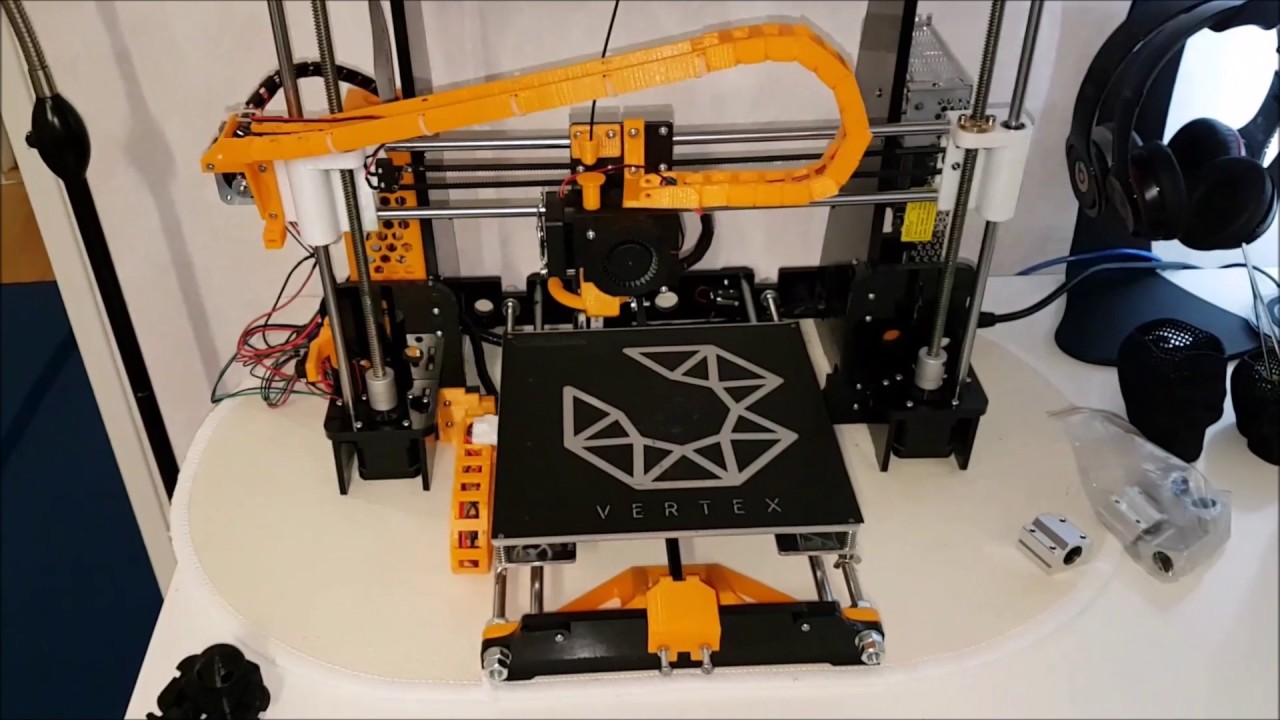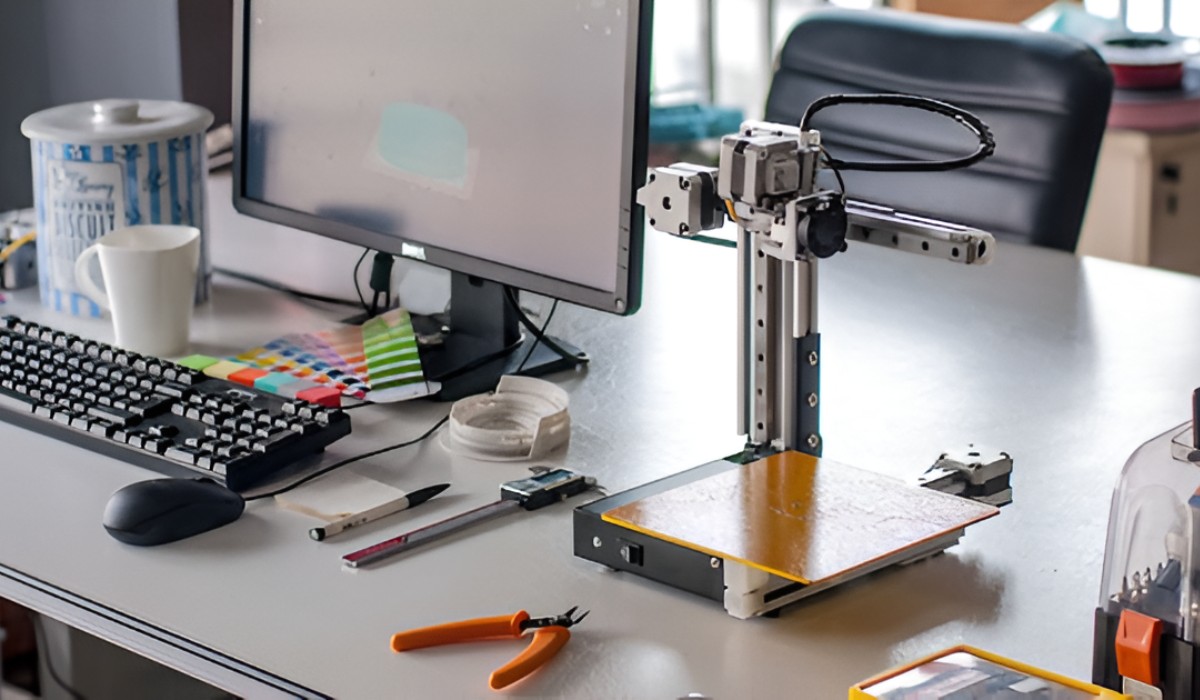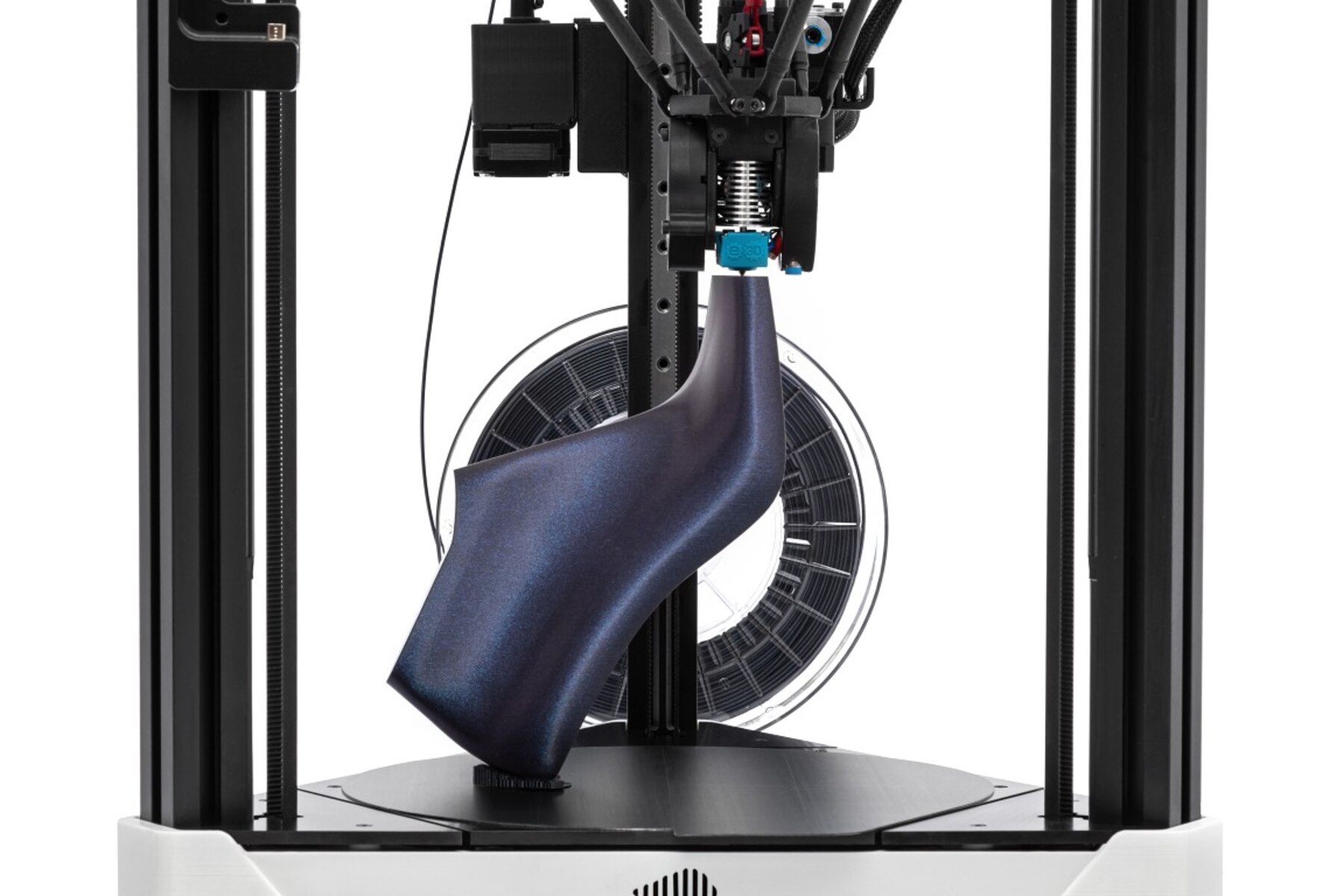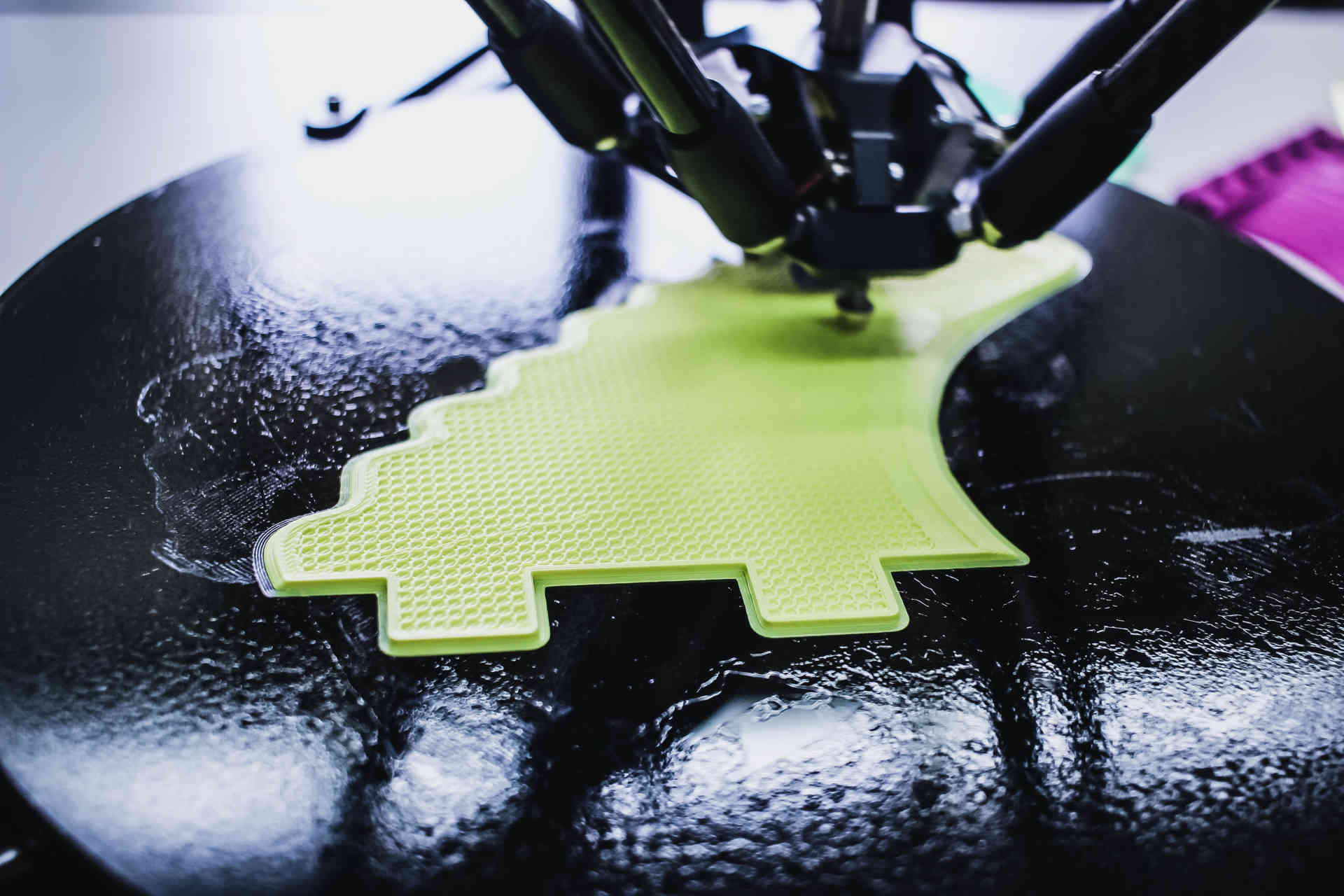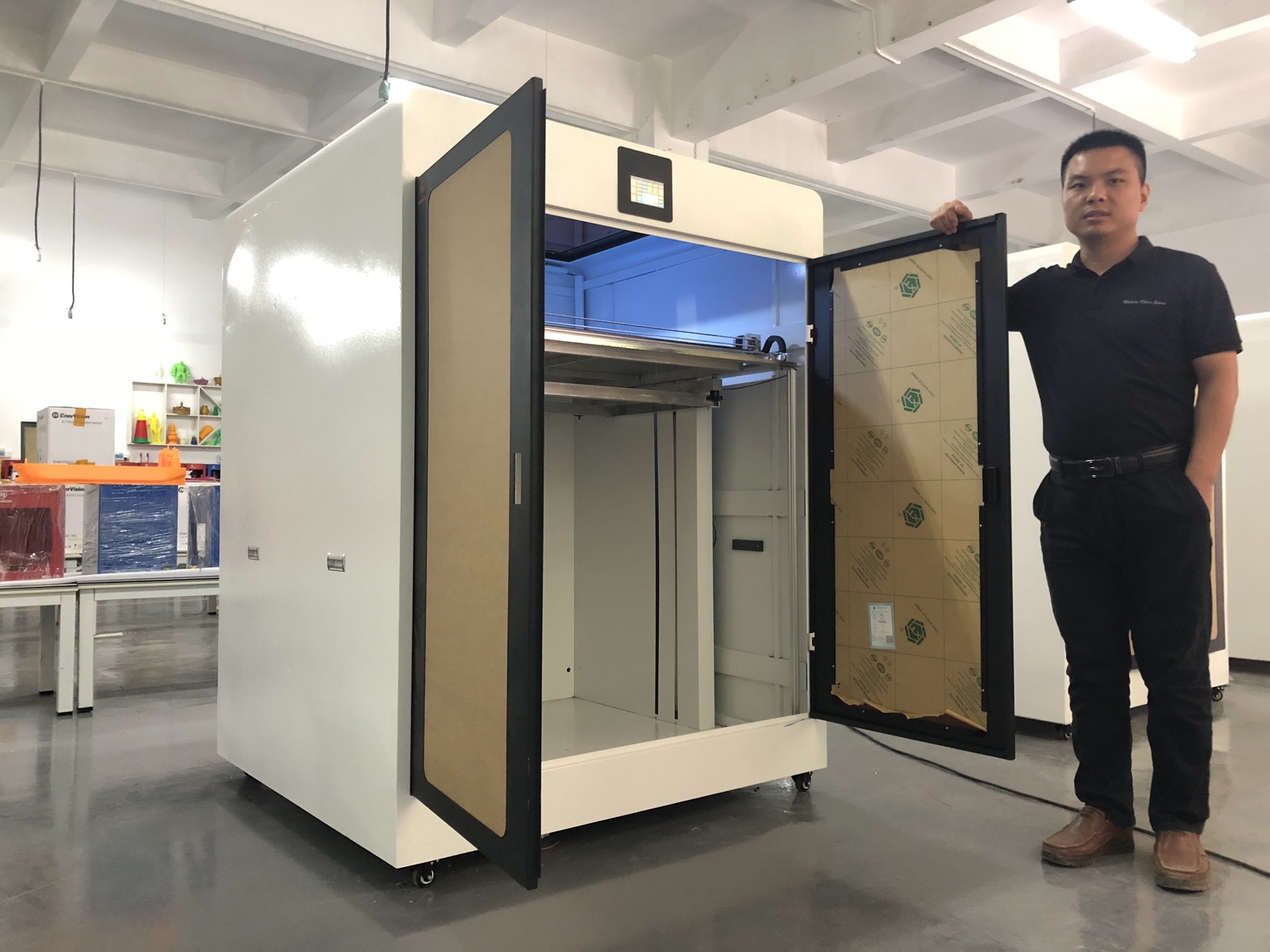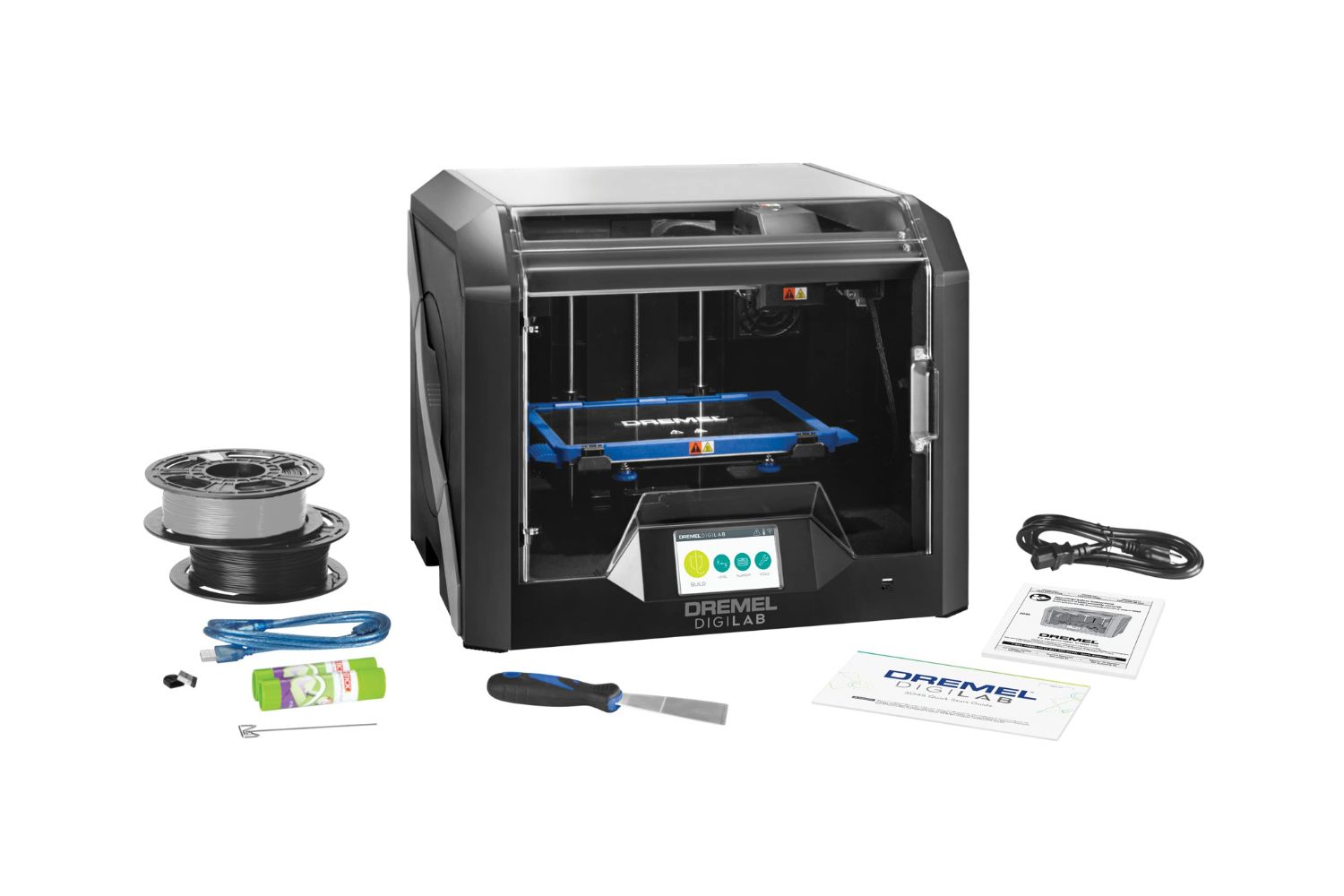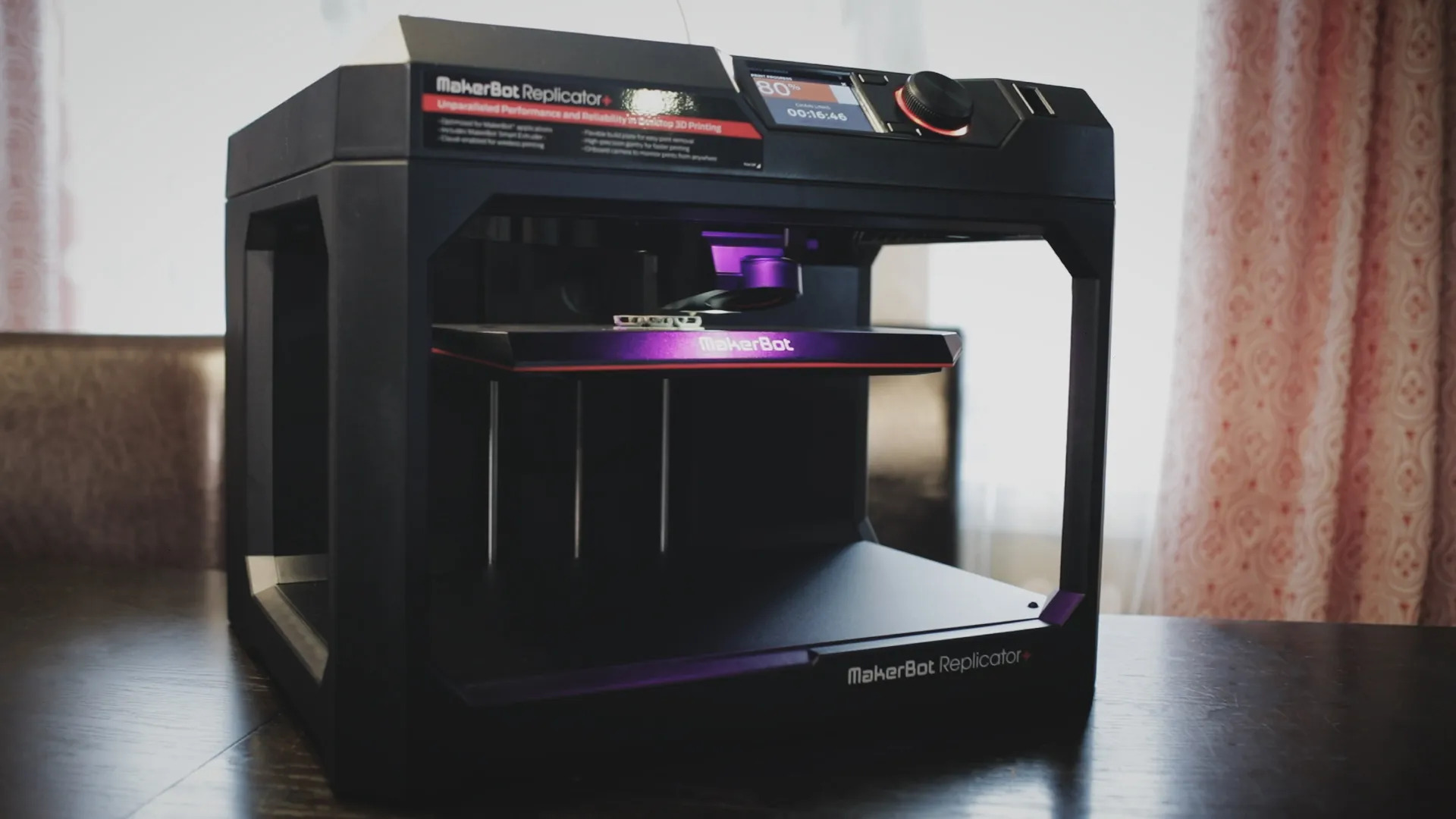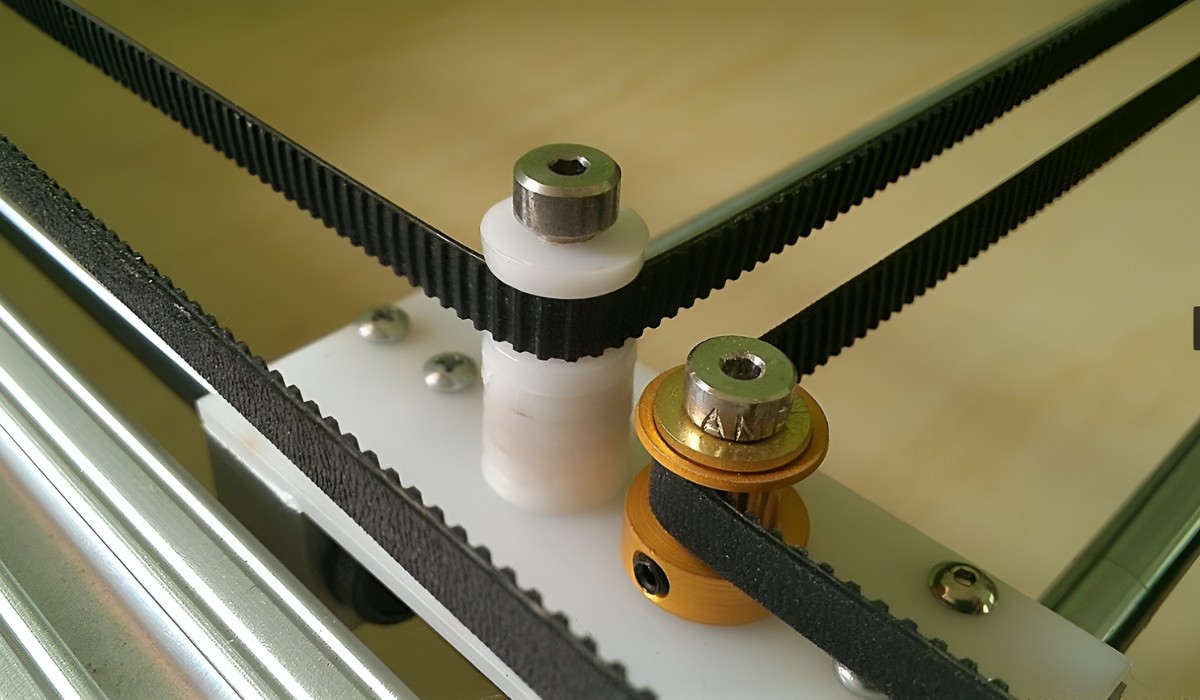Introduction
3D printers have revolutionized the world of manufacturing and brought the ability to create complex objects right at our fingertips. From hobbyists to professionals, these machines have opened up a whole new realm of possibilities. But have you ever wondered how a 3D printer stores and retrieves important settings and data? This is where EEPROM (Electrically Erasable Programmable Read-Only Memory) comes into play. In this article, we’ll explore the role of EEPROM in 3D printing, how it works, and why it is an essential component of any 3D printer.
EEPROM is a type of memory that can be erased and written electrically, making it ideal for storing and retrieving data in a 3D printer. It is a non-volatile memory, which means that it retains its information even when the power is turned off. This makes it a reliable choice for storing crucial settings, such as print temperatures, motor steps, and other configuration values.
The role of EEPROM in a 3D printer is similar to that of a computer’s BIOS or firmware. It serves as a repository for storing important parameters that affect the printer’s performance and output. Without EEPROM, these settings would need to be manually entered each time the printer is powered on, leading to inconvenience and potential errors.
Storing and retrieving data in EEPROM is made possible through the use of a microcontroller. This small yet powerful chip controls the operations of the printer and manages the interaction between the user and the machine. When you modify a setting through the printer’s interface, the microcontroller takes that information and writes it into the EEPROM. When the printer powers on, the microcontroller reads the stored values from the EEPROM and applies them to the printer’s operations.
The utilization of EEPROM in a 3D printer offers several benefits. Firstly, it provides a convenient way to store and recall custom settings. For example, if you have a specific temperature profile that works well for a certain filament, you can save that setting in the EEPROM and easily access it whenever needed. This saves time and eliminates the need for manual adjustments each time you switch materials.
Furthermore, EEPROM also ensures that your settings are preserved even in the event of a power outage or a system restart. This prevents the frustration of losing your carefully calibrated settings and having to start from scratch. By storing the values in EEPROM, you can resume printing seamlessly without the need for reconfiguration.
However, it is important to note that EEPROM has its limitations in 3D printing. Due to its limited size, there may be restrictions on the number of settings that can be stored. Additionally, constant read-write operations on the EEPROM can eventually wear it out, so it is essential to use it judiciously and avoid excessive modifications unless necessary.
In the next section, we will delve deeper into how to access and modify the EEPROM settings on a 3D printer, providing you with a practical understanding of how to make the most of this valuable feature.
What is EEPROM?
EEPROM, or Electrically Erasable Programmable Read-Only Memory, is a type of memory used in electronic devices, including 3D printers. Unlike other types of memory, such as Random Access Memory (RAM) which loses data when power is disconnected, EEPROM retains its memory even without power. This non-volatile characteristic makes EEPROM a reliable choice for storing important settings and data in a 3D printer.
EEPROM is similar to other forms of ROM (Read-Only Memory) in that the data is stored permanently and cannot be easily changed. However, unlike traditional ROM, EEPROM can be rewritten multiple times, allowing for the modification and updating of stored information.
EEPROM is programmed electrically, meaning that it can be erased and written to using electrical currents. This is done using specialized programming commands and voltages, which allow certain memory cells in the EEPROM to be cleared or set to a specific value. This flexibility makes it ideal for storing configuration settings, calibration values, and other data that needs to be retained even when power is cycled.
In a 3D printer, EEPROM serves as a storage medium for various important parameters such as print temperatures, motor steps, acceleration settings, and PID values. These settings impact the printer’s performance and the quality of the printed objects. By storing these values in the EEPROM, users can easily modify and access the settings without the need for manual adjustments or reconfiguration each time the printer is powered on.
EEPROM is organized into individual memory locations, each holding a specific data value. These memory locations can be accessed and retrieved by the printer’s microcontroller, which is responsible for managing the overall operations of the printer. The microcontroller can read the stored settings from the EEPROM and apply them to the printer’s functions. Additionally, when users modify settings through the printer’s interface, the microcontroller writes the updated values back to the EEPROM for future use.
One advantage of using EEPROM in a 3D printer is its simplicity and ease of use. Unlike other types of storage, such as SD cards or external memory devices, EEPROM is integrated directly into the printer’s hardware. This makes it a more efficient and cost-effective solution for storing the printer’s configuration data.
In summary, EEPROM is a type of non-volatile memory that is commonly used in 3D printers to store important settings and data. It provides a reliable and convenient method for retaining configuration values and allows users to modify and access these settings easily. By utilizing EEPROM, 3D printer users can ensure consistent performance and achieve high-quality prints without the need for manual adjustments each time the printer is used.
The Role of EEPROM in 3D Printing
EEPROM plays a vital role in the operation of a 3D printer by storing and managing essential settings and configuration values. Let’s delve into the specific roles that EEPROM plays in the 3D printing process.
One key role of EEPROM is to store temperature settings. Temperature is a critical parameter in 3D printing as it affects the material flow, adhesion between layers, and overall print quality. By storing temperature values in EEPROM, the printer can retain the desired settings each time it is powered on. This eliminates the need for users to manually input temperature values before each print, ensuring consistency and convenience.
Another crucial role of EEPROM is to store motor steps and acceleration settings. These values determine the movement and precision of the printer’s extruder and build platform. By storing these parameters in EEPROM, the printer can retain the specific motor steps and acceleration settings for different print profiles. This allows for seamless switching between different print configurations without the need for recalibration each time.
EEPROM also plays a significant role in storing PID (Proportional Integral Derivative) values. PID control is used to regulate temperature in heated components, such as the print bed or hotend. By storing PID values in EEPROM, the printer can maintain consistent and accurate temperature control. This ensures that the printer is calibrated for optimal performance and reduces the risk of temperature fluctuations during the printing process.
Additionally, EEPROM stores other configuration values, such as Z-offset, flow rate adjustment, and fan speeds. These settings are crucial for achieving precise and high-quality prints. By storing these values in EEPROM, users can easily modify and fine-tune the printer’s performance parameters without the need for external devices or complex software adjustments.
The use of EEPROM in 3D printing also provides a level of flexibility and customization. Users can save custom profiles and settings to EEPROM, allowing for quick and easy access to preferred print configurations. This is particularly useful for users who frequently switch between different filaments or have specific print requirements for different projects.
In summary, EEPROM plays a crucial role in 3D printing by storing and managing important settings and configuration values. From temperature settings to motor steps, PID values, and various other printer parameters, EEPROM ensures consistent performance and eliminates the need for frequent manual adjustments. Its ability to retain data, even when power is disconnected, makes it an essential component in the smooth operation of a 3D printer.
Storing and Retrieving Data in EEPROM
Storing and retrieving data in EEPROM is a crucial aspect of 3D printing. It involves the process of writing and reading important settings and configuration values to and from the EEPROM of a 3D printer. Let’s explore how this process works.
When you modify a setting through the printer’s interface, such as adjusting the temperature or changing the motor steps, the new values are sent to the microcontroller. The microcontroller, which acts as the “brain” of the 3D printer, is responsible for managing the interactions between the user, the printer’s hardware, and the EEPROM.
Once the microcontroller receives the updated values, it writes them into specific memory locations within the EEPROM. Each setting is assigned a dedicated memory location, ensuring that the values are stored accurately and can be easily accessed in the future.
The EEPROM stores the settings even when the printer is turned off, thanks to its non-volatile memory characteristics. This means that the printer can retain the modified values for the next print job or whenever it is powered on again.
During power-up, the microcontroller reads the stored values from the EEPROM and applies them to the printer’s operations. This ensures that the printer is configured with the correct settings without the need for manual intervention.
Retrieving data from the EEPROM is a straightforward process for the microcontroller. It simply accesses the specific memory locations where the settings are stored and retrieves the values as needed. This data retrieval happens behind the scenes, transparent to the user.
The process of storing and retrieving data in EEPROM provides several benefits for 3D printer users. Firstly, it offers ease of use and convenience. Users can modify settings through the printer’s interface, and the changes are automatically saved to the EEPROM. This eliminates the need for manually recording and inputting settings each time the printer is turned on.
Furthermore, storing data in EEPROM ensures data integrity and reliability. Since EEPROM is a non-volatile memory, it retains the settings even in the event of power loss or system restart. This eliminates the frustration of losing important calibration and configuration values and having to start from scratch.
A key advantage of storing and retrieving data in EEPROM is its versatility. 3D printer users can save multiple sets of custom settings, such as different temperature profiles or motor steps, in the EEPROM. This allows for quick and seamless switching between different print configurations without the need for extensive reconfiguration.
In summary, storing and retrieving data in EEPROM is a fundamental process in 3D printing. It involves the microcontroller writing modified settings to specific memory locations within the EEPROM and reading the stored values during power-up. This process ensures the printer operates with accurate settings, provides ease of use for users, and maintains data integrity and reliability.
Benefits of Using EEPROM in a 3D Printer
Using EEPROM (Electrically Erasable Programmable Read-Only Memory) in a 3D printer offers several benefits for both users and the overall printing process. Let’s explore some of the advantages of utilizing EEPROM in a 3D printer.
One of the primary benefits of using EEPROM is the convenience it brings to the printing experience. With EEPROM, users can easily store and recall custom settings, such as temperature profiles, motor steps, and calibration values. This eliminates the need for manual adjustment each time you switch materials or print configurations. Simply access the stored values in the EEPROM, and the printer is ready to go, saving valuable time and effort.
The EEPROM’s non-volatile nature ensures that the settings are retained even when power is disconnected. This means that you don’t have to worry about losing your carefully calibrated parameters in the event of a power outage or a system restart. With EEPROM, your settings stay intact, allowing you to resume printing seamlessly without the need for reconfiguration.
Another important benefit of using EEPROM is the ability to fine-tune and customize your printing experience. With EEPROM, you can store and adjust various parameters, such as flow rate, fan speeds, and Z-offset values, to achieve optimal printing results. This level of customization allows you to tailor the printer’s performance to your specific needs and preferences.
In addition, using EEPROM reduces the risk of human error. Manually entering and adjusting settings each time you start a new print job can be time-consuming and prone to mistakes. By storing the values in EEPROM, you eliminate the possibility of inputting incorrect parameters, ensuring consistent and accurate print results.
Furthermore, EEPROM provides a centralized location for storing configuration data. Instead of relying on external storage devices, such as SD cards or USB drives, to save and transfer settings, EEPROM integrates directly into the printer’s hardware. This simplifies the workflow and reduces the chances of misplaced or lost configuration files.
EEPROM also allows for easy experimentation and iterative improvements. By storing different sets of settings in the EEPROM, you can quickly switch between configurations to test and refine your prints. This flexibility promotes a more iterative and efficient approach to 3D printing, enabling you to achieve the desired results with fewer iterations.
Lastly, using EEPROM promotes consistency and repeatability in your prints. Since the stored settings are applied automatically each time you power on the printer, you can ensure that your prints are consistent in quality and appearance. This reliability is especially important for projects that require precision and accuracy.
In summary, the benefits of using EEPROM in a 3D printer include convenience, data retention, customization, error reduction, centralized storage, experimentation, and consistency. By taking advantage of EEPROM’s capabilities, you can enhance your printing experience and achieve more reliable and high-quality prints.
Limitations of EEPROM in 3D Printing
While EEPROM (Electrically Erasable Programmable Read-Only Memory) is an invaluable component in a 3D printer, it does have certain limitations that users should be aware of. Understanding these limitations can help users make informed decisions and effectively utilize EEPROM in their 3D printing workflows.
One of the primary limitations of EEPROM is its limited storage capacity. EEPROM typically has a smaller memory size compared to other storage options, such as SD cards or external drives. This limited capacity means that there is a finite amount of data that can be stored in the EEPROM. Depending on the complexity and number of settings stored, there may be restrictions on the number of profiles or configurations that can be stored simultaneously.
Additionally, constant read-write operations on the EEPROM can eventually wear it out over time. Each storage cell within the EEPROM has a finite number of write cycles before it becomes unreliable. While modern EEPROMs have a high endurance rating, it is still important to use EEPROM judiciously and avoid excessive modifications unless necessary. Frequent changes to settings or constant rewriting of data can accelerate wear and may eventually lead to the failure of the EEPROM.
Another limitation is that EEPROM can be less accessible compared to other forms of storage. Unlike SD cards or USB drives, which can be easily removed and accessed on other devices, EEPROM is integrated directly into the printer’s hardware. This means that accessing and modifying the settings stored in the EEPROM may require navigating through the printer’s interface or using specific software tools. As a result, it may be less convenient to transfer settings between different printers or share them with other users.
Furthermore, due to the smaller memory size of EEPROM, it may not be suitable for storing large or complex data sets. For example, storing intricate print patterns or detailed graphics in the EEPROM memory may not be feasible. In such cases, it is more practical to store such data externally and load it into the printer as needed.
Lastly, while EEPROM retains its data even when power is disconnected, it is not immune to data corruption or loss. Unexpected power surges or other electrical issues can potentially disrupt the data stored in the EEPROM, leading to inconsistencies or rendering the stored settings unusable. It is essential to have proper backup and recovery mechanisms in place to mitigate the risk of data loss or corruption.
In summary, while EEPROM is a valuable component in 3D printers, it is not without its limitations. These limitations include limited storage capacity, possible wear and tear over time, reduced accessibility, restrictions on large or complex data, and susceptibility to data corruption. Being aware of these limitations can help users make informed decisions when utilizing EEPROM in their 3D printing workflows.
How to Access and Modify EEPROM Settings
Accessing and modifying EEPROM settings in a 3D printer is a straightforward process that can be done through the printer’s interface or specific software tools. Let’s explore the steps involved in accessing and modifying EEPROM settings.
To access EEPROM settings through the printer’s interface, start by powering on the printer. Once the printer is powered on, navigate to the settings menu on the printer’s display. Look for an option that allows you to access the EEPROM settings or configuration. This option may be labeled as “EEPROM,” “Configuration,” or “Settings.” Select this option to enter the EEPROM menu.
In the EEPROM menu, you will find a list of different configuration parameters that can be modified. These parameters may include temperature settings, motor steps, acceleration values, PID values, and other printer-specific settings. Navigating through the menu, locate the specific parameter that you want to modify.
Once you have identified the parameter, use the printer’s interface controls to adjust the value. This may involve using arrow keys, a dial, or a touchscreen interface to increase or decrease the value. As you make changes, the new values will typically be displayed on the screen for confirmation. Continue adjusting the values until you reach the desired settings.
After modifying the parameter, you will need to save the changes to the EEPROM. Look for an option, usually labeled “Save” or “Store,” to confirm and write the new values to the EEPROM. Select this option to save the updated settings. The printer will typically display a message indicating that the changes have been successfully stored in the EEPROM.
In addition to accessing EEPROM settings through the printer’s interface, there are also software tools available that allow for more advanced and precise control over the EEPROM settings. These tools may include firmware update utilities or dedicated software applications provided by the printer manufacturer. These tools often provide a more comprehensive interface with additional options and settings beyond what is available through the printer’s onboard menu.
When using software tools to access and modify EEPROM settings, you will typically connect your computer to the printer via a USB cable or other communication interface. Launch the software tool and connect to the printer. From there, you can access the EEPROM settings and make modifications as needed. The software tools may offer more advanced features, such as the ability to import or export EEPROM profiles, backup and restore settings, or perform firmware updates.
In summary, accessing and modifying EEPROM settings in a 3D printer can be done through the printer’s interface or specific software tools. By navigating through the printer’s menu or using dedicated software applications, users can adjust parameters such as temperature, motor steps, acceleration, and more. Saving the changes to the EEPROM ensures that the modified settings are retained even when the printer is powered off, allowing for convenient and consistent printing experiences.
Examples of EEPROM Usage in 3D Printing
EEPROM (Electrically Erasable Programmable Read-Only Memory) plays a vital role in 3D printing, offering a wide range of applications and benefits. Let’s explore some examples of how EEPROM is used in the context of 3D printing.
1. Temperature Profiles: EEPROM allows users to store and recall different temperature profiles for various filaments. For example, you can create an EEPROM profile with specific temperature settings for PLA, ABS, or flexible filaments. This enables users to quickly switch between different materials without the need for manual temperature adjustments each time.
2. Z-offset Calibration: EEPROM is used to store the Z-offset values, which determine the distance between the nozzle and the print bed. By storing these values in EEPROM, users can easily calibrate and fine-tune the printing process for optimal bed adhesion and object quality.
3. Motor Steps and Acceleration: EEPROM allows for the storage and modification of motor step values and acceleration settings. These configurations determine the precision and movement of the printer’s motors. By utilizing EEPROM, users can easily adjust and save custom motor step configurations for different print profiles.
4. Fan Speeds: With EEPROM, users can store different fan speed values for cooling various prints. This allows for fine control over the cooling process and helps achieve optimal print quality based on specific filament requirements and geometric complexities.
5. Flow Rate Adjustment: EEPROM enables users to store different flow rate values for adjusting the extrusion rate. This is particularly useful when printing intricate details or working with different materials that may require variations in extrusion flow.
6. PID Values: The PID (Proportional Integral Derivative) controller is used for maintaining accurate temperature control in 3D printers. EEPROM allows users to store and modify the PID values, ensuring consistent and reliable temperature performance.
7. Custom Configuration Profiles: EEPROM provides the capability to create and save custom configuration profiles for specific printing scenarios. For example, users can create profiles optimized for printing miniatures, functional parts, or large-scale objects. These profiles can include a combination of temperature settings, motor steps, PID values, and other configurations needed for a desired outcome.
8. Firmware Updates: EEPROM is also crucial for firmware updates in 3D printers. With EEPROM, firmware updates can be stored directly within the printer’s memory, allowing for smooth and convenient installation without the need for additional external devices.
These are just a few examples of how EEPROM is used in 3D printing. The versatility and flexibility of EEPROM allow users to customize their printing experience, fine-tune settings, and achieve consistent and high-quality prints for a wide range of applications.
Conclusion
EEPROM plays a crucial role in the world of 3D printing by storing and managing important settings and configuration values. Its non-volatile memory characteristics ensure that settings are retained even when the power is disconnected, providing convenience, reliability, and consistency for users. From temperature profiles to motor steps, PID values, and various other printer parameters, EEPROM enables users to customize and fine-tune their printing experience.
The use of EEPROM brings numerous benefits to 3D printing. It simplifies the printing process by allowing users to easily store and recall custom settings, eliminating the need for manual adjustments each time the printer is powered on. EEPROM also ensures the preservation of settings, even in the event of power outages or system restarts, eliminating the frustration of losing calibrated parameters. Its ability to retain data over time promotes convenience and repeatability in printing.
However, it is crucial to be aware of the limitations of EEPROM, such as limited storage capacity and the potential for wear and tear over time. Despite these limitations, proper understanding and use of EEPROM can enhance the 3D printing experience and contribute to achieving high-quality prints.
In conclusion, EEPROM is an essential component in a 3D printer, providing a reliable and efficient method for storing and retrieving important settings and configuration values. Understanding how to access and modify EEPROM settings allows users to harness its power and customize their printing experience. By leveraging the capabilities of EEPROM, 3D printing enthusiasts can achieve consistent, reliable, and high-quality prints for a wide range of applications.







